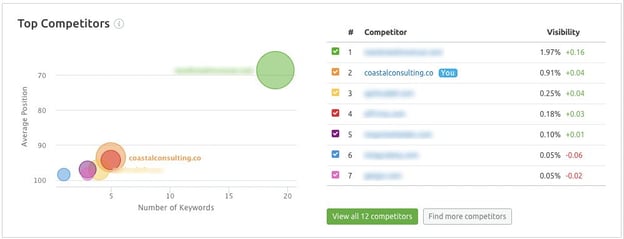Share this
Beginner's Guide to Website Optimization
by Lauren Ryan on July 2021
Most new business owners specialize in their products or services and don’t have a strong marketing background. This makes building your first website a bit of a hurdle. While aesthetic and design are important for user experience, content, SEO, and analytics are essential to driving traffic to your website to see the awesome designs you’ve created! Here’s a quick checklist of items to consider when building your first website.
Reduce Loading Speed
Loading speed is everything. Slow websites are often abandoned and never revisited. If a website takes more than 3 seconds to load, 40% of people will abandon the site. Talk about impatience.
.png?width=1200&name=jpeg%20vs%20png%20(1).png)
How to Reduce Website Loading Speed
- Monitor your website loading speed using Google’s Page Speed Insights tool
- Use the correct file format for images (JPEG, GIF, PNG)
- Reduce image file size before adding to your asset library
- Reduce 301 redirects
- Limit the tracking codes in your HTML header to the essentials (Google Analytics, etc.)
- Minimize first time to byte
Optimize Your Website for SEO
Investing in Search Engine Optimization (SEO) increases your website’s visibility in search engines. Without a proper SEO strategy, you will need to invest heavily in paid advertising to direct users to your website. If you invest in SEO, your organic search traffic will increase and reduce paid advertising spending.

How to Optimize Your Website for SEO
- First and foremost, E-A-T (Expertise, Authoritativeness, and Trustworthiness). These are some of the most significant factors that Google uses to evaluate content quality on web pages. So, again, creating user-first content is critical.
- Research keywords and incorporate them strategically into your website pages and blogs
- Produce valuable content for your blog. The ideal length for a blog is widely disputed but aim for 1,500-2,000 words to get started and optimize for your audience as you learn more about them.
- Link to your website pages and blog posts throughout your website
- Use tools like HARO to submit pitches to bloggers and reporters to earn backlinks to your website
- Invest in an SEO monitoring tool like SEMRush to monitor your visibility and track your performance compared to competitors (screenshots below)


Design for Accessibility
Your website needs to be accessible for all users. Not only will accessibility misses reduce your ranking in search engines, but they will also negatively impact your user experience.
How to Make Your Website Accessible
- Add alt tags to all images
- Fix all broken or misdirected links
- Use unique and descriptive names for links
- Design your content structure in a clear, concise manner
- Use heading declarations (H1, H2, etc.) correctly
- Use colors with a clear contrast to make the text easier to read
- Clearly label forms used on your website
Branding Best Practices
Now that we’ve laid the foundation for technical basics let's talk brand. Your website directly reflects your company brand and is often the first touchpoint for potential clients and customers. Bring out the personality in your website without the extra fluff.
How to Design Your Website
- Be consistent. With everything from brand tone to key messaging and design elements, consistency is key.
- Keep your design clean and concise. Make sure visitors have a clear path to navigate your site. If they can't find what they’re looking for quickly, they will move on.
- Design for mobile. In 2020, 68.1% of all website traffic was from mobile devices. So, mobile-first design is crucial to building an online presence.
- Tell a story. Minimize text and capture attention with visuals.
- Direct traffic. Make your calls to action (CTAs) evident and accessible. Be clear when asking your users to take a specific action on your website.
- Avoid spelling errors. Run spell check on your website.
- Optimize & optimize again. Develop an A/B testing strategy and use sites like Hotjar to ensure your website is best serving user needs.
Last but not least, use your data to guide you. Overall, the key to a great website is designing and optimizing with your end-user in mind
Share this
- April 2025 (1)
- March 2025 (1)
- January 2025 (3)
- December 2024 (2)
- September 2024 (2)
- August 2024 (2)
- July 2024 (3)
- June 2024 (1)
- May 2024 (1)
- February 2024 (1)
- January 2024 (1)
- December 2023 (1)
- November 2023 (1)
- October 2023 (5)
- September 2023 (2)
- June 2023 (1)
- April 2023 (2)
- March 2023 (2)
- February 2023 (5)
- January 2023 (8)
- December 2022 (7)
- November 2022 (10)
- October 2022 (2)
- September 2022 (11)
- August 2022 (4)
- July 2022 (2)
- June 2022 (3)
- May 2022 (8)
- April 2022 (6)
- March 2022 (4)
- February 2022 (4)
- January 2022 (6)
- December 2021 (4)
- November 2021 (4)
- October 2021 (4)
- August 2021 (1)
- July 2021 (7)
- June 2021 (15)
- May 2021 (1)
- March 2021 (2)
